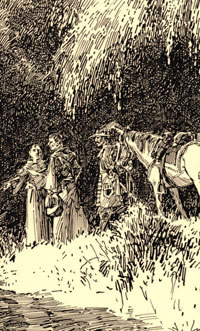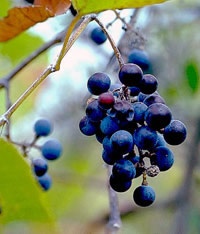Ranchería of the Geniocane Indians
In May, 1675, the expedition of Fr. Juan Larios and Lt. Fernando del Bosque camped at the ranchería of the Geniocane, located in an arroyo in the hills near Indian Creek in present-day Edwards County. The expedition, which included a contingent of 10 Spaniards, several Bobole leaders and warriors, and about 100 Guiquesale warriors, had been sent north of the Rio Grande to survey the land, make note of the environmental resources, and count the native peoples.
At the site, Lt. Bosque erected a large wooden cross and named the settlement San Jorge. According to diary entries, the expedition camped there for several days; an altar was erected , and mass and prayers were said for the Indians, a group of about 65 warriors and 113 women and children. The travelers noted the abundance of red grapes (ubas cimarronas) growing on vines, some of which they believed may have been intentionally pruned and trained to improve the fruit.
Bosque took note of the situation at San Jorge, stating that many Indian groups expressed a desire to be baptized and become Christians, but they lived in settlements far from Monclova, Mexico, where they originally had been invited to settle by the Spanish. Many were engaged in warfare among themselves.
Ethnohistorian and UT-Austin Anthropology professor Mariah Wade, who translated the Bosque-Larios journal, believes this site is roughly 2.5 miles northeast of the West Nueces River and in the valley of Indian Creek. She notes that the Geniocane were likely enemies of the Gueiquesale. She suggests the grapes were wild mustang grapes
To learn more about San Jorge and the Bosque-Larios expedition, see Wade’s 2002 book, The Native Americans of the Edwards Plateau, published by University of Texas Press.

